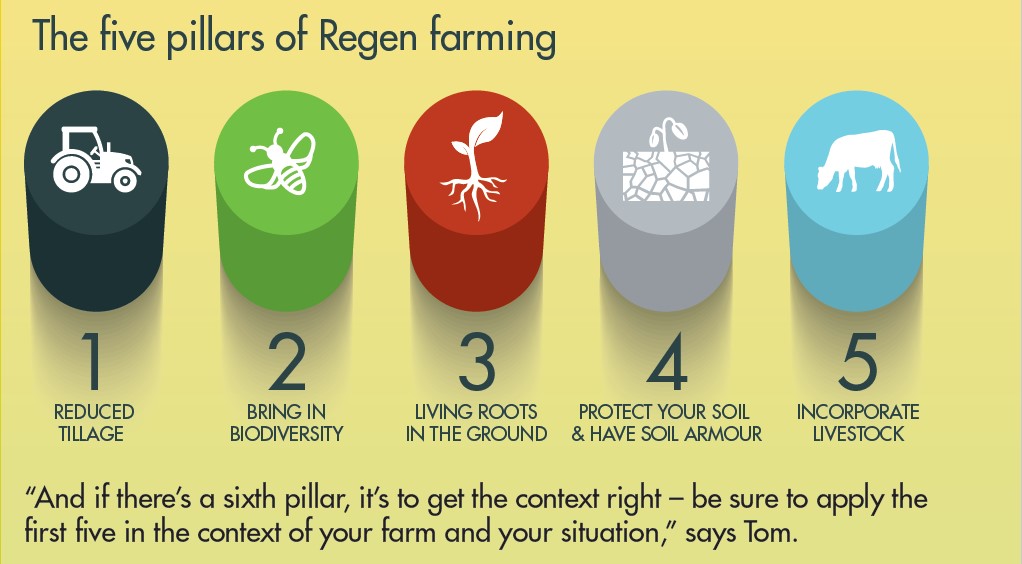
Tom Martin, who farms near Peterborough and Agrii agronomist, Neil Harper answer the tough question of what is the reality check that we need to honestly answer to be able to learn from to go forward today with regen farming.
With more farmers than ever exploring regen farming, maintaining profitability has never been more of a challenge. Starting with the mindset of suddenly changing practices and getting the results is easier said than done.
Volatility in markets is a challenge. Fertiliser prices have increased, grain prices have reduced from the highs seen in 2022, and the challenge with farming is not knowing what the crops being grown will be worth at the end of the day. But where to start? Regen is more than reducing tillage. It’s about good manure, building up soil organic matter, bringing in livestock to graze cover crops in the wintertime, improving biodiversity, increasing the number of crops in rotation and using companion cropping. When getting into regen farming, Neil suggests learning from failures and discussing with other groups of farmers and advisors as great ways of mitigating some of the pitfalls.

Does the plough still have a place?
“It’s still needed in the right situation,” comments Neil. “Bringing in different cultivation practices, using cover crops and having that mindset to be brave enough to say, I need to start from a good place. It’s also about understanding that mother nature occasionally does something that puts us under more pressure.
“We have to be flexible to get the best out of these systems. It’s not a failure if you have to revert and move a bit more soil. It could mean ploughing; you are doing what’s right, but then it’s thinking, how can I reduce the harm or the damage it’s causing? Can I use green manure? Is it the right thing? Can I use a cover crop at the right time of year?”
Mindset matters
“We talk about the top six inches, and often people think that means the soil, but as Clive Woodward used to talk about in the 2003 Rugby World Cup campaign, it’s our brains. Our minds are the six inches we must change before thinking about our soils. Try to understand what’s going on, how we can make a difference, and what we might do. Your first step might be bringing in a local contractor with slightly different machinery,” explains Neil.
To discover the best place to start with regen farming and Tom and Neil’s top three tips before getting started, listen to the full podcast here
To discover more about regenerative farming principles, click here to access Insight Report 1: Improving Soil Resilience, the first of five Insight Reports.


